#15th President of India
Explore tagged Tumblr posts
Text
ides of march

well, its tumblr's favorite holiday and who can blame us? The assassination of Julius Caesar is probably one of the only group projects that ever went down the way it was supposed to with, well, not complete group participation (there were said to be upward of 60 people involved but only 23 stab wounds - obviously someone was not carrying their weight) but at least a good effort was made at it. But lets take a moment, between our jokes about salad and Animal Crossing butterfly nets to look at what else has happened in history on the Ides of March. For instance, did you know, on March 15th:
1493 - Columbus returned to Spain after 'discovering' the new world.
1580 - Phillip II of Spain put a bounty on the head of Prince William I of Orange for 25,000 gold coins for leading the Dutch revolt against the Spanish Hamburgs
1744 - King Louis XV of France declares war on Britain
1767 - Andrew Jackson, who would go on to be the seventh president of the US, was born.
1820 - Maine became the 23rd state in the US
1864 - the Red River Campaign, called 'One damn blunder from beginning to end' started for the Union Forces in the American Civil War
1889 - a typhoon in Apia Harbor, Samoa sinks 6 US and German warships, killing 200
1917 - Czar Nicholas II abdicated the Russian throne, bringing an end to the Romanov dynasty
1955 - the first self-guided missile is introduced by the US Air Force
1965 - TGI Friday's opens its first restaurant in New York City
1991 - in LA, four police officers are brought up on charges for the beating of Rodney King
2018 - Toys R Us announces it will be closing all its stores
2019 - a terrorist attacks two mosques in Christchurch, New Zealand, killing 51, and wounding 50 others
Oof! Pretty bleak, isn't it? It would almost make you think that the day is just bad luck, start to finish and its probably just as well, we're all focusing on assassination instead of other horrors. But wait - its not all bad news! The Ides of March has some tricks up its sleeve yet (joke intended). I'd be telling you only half the story if I didn't add:
1854 - Emil von Behring is born and will eventually become the first to receive the Nobel Prize in medicine for his discovery of a diphtheria antitoxin, being called 'the children's savoir' for the lives it saves
1867 - Michigan is the first state to use property tax to support a university
1868 - the Cincinnati Red Stockings have ten salaried players, making them the first professional baseball team in the US
1887 - Michigan has the first salaried fish and game warden
1892 - the first automatic ballot voting machine is unveiled in New York City
1907 - Finland gives women the right to vote, becoming the first to do so in Europe
1933 - Ruth Bader Ginsberg is born and will go on to become a US Supreme Court justice
1934 - the 5$ a day wage was introduced by Henry Ford, forcing other companies to raise their wages as well or lose their workers
1937 - the first state sponsored contraceptive clinic in the US opens in Raleigh, North Carolina
1946 - the British Prime minister recognizes India's independence
1947 - the US Navy has its first black commissioned officer, John Lee
1949 - clothes rationing ends in Britain, four years after the end of WWII
1960 - ten nations meet in Geneva for disarmament talks
1968 - the Dioceses of Rome says it will not ban 'rock and roll' from being played during mass but that it deplores the practice - also in 1968, LIFE magazine titles Jimi Hendrix 'the most spectacular guitarist in the world'
1971 - ARPANET, the precursor of the modern day internet, sees its first forum
1984 - Tanzanian adopts a constitution
1985 - symbolics.com, the first internet domain name, is registered
The Ides of March turns out to just be a day, like any other day in history.
Unless you're us. In which case -

#ides of march#happy ides of march#julius caesar#today in history#please take some of my 'bad' dates as tongue in cheek#we love you maine#and a few of my dates fit both the good and bad side of the things so I just went with whichever I was on at the time#feel free to wiggle them around to a more appropriate column
14 notes
·
View notes
Text
Famous Temple Of Rajasthan, (Rajasthan Devdarshan)
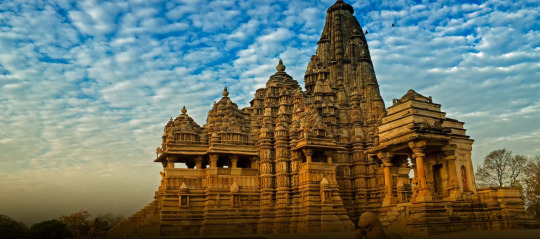
Rajasthan, known for its rich history, vibrant culture, and royal heritage, is also home to some of India’s most magnificent temples. These temples are not only architectural marvels but also spiritual sanctuaries, attracting visitors from across the world. Here’s a look at some of the most famous temples in Rajasthan, each reflecting the state’s glorious legacy and profound spiritual traditions.
1. Dilwara Temples, Mount Abu
The Dilwara Temples, located in Mount Abu, are a group of five Jain temples renowned for their stunning marble architecture and intricate carvings. Built between the 11th and 13th centuries, the temples showcase exquisite craftsmanship with detailed carvings on pillars, ceilings, and walls. The most famous of the Dilwara temples is the Vimal Vasahi Temple, dedicated to Lord Adinath, the first Jain Tirthankara. The delicate marble work and precision of design make it a prime example of Jain architecture and devotion.
2. Brahma Temple, Pushkar
The Brahma Temple in Pushkar is one of the few temples in the world dedicated to Lord Brahma, the Hindu god of creation. This ancient temple, believed to be over 2000 years old, is surrounded by myths and legends. Its red spire and distinct architecture make it easily recognizable. The Pushkar Lake, adjacent to the temple, holds significant religious importance, especially during the annual Pushkar Camel Fair, when thousands of pilgrims visit to take a holy dip in the lake and offer prayers at the Brahma Temple.
3. Govind Dev Ji Temple, Jaipur
Located in the City Palace complex in Jaipur, the Govind Dev Ji Temple is dedicated to Lord Krishna. Built during the reign of Raja Sawai Jai Singh II in the 18th century, the temple features a simple yet elegant design. The idol of Lord Krishna in this temple is believed to have been brought from Vrindavan and holds great reverence among the devotees. The temple is especially lively during Janmashtami, the birth anniversary of Lord Krishna, attracting devotees and tourists alike.
4. Karni Mata Temple, Deshnoke
Located in Deshnoke, near Bikaner, the Karni Mata Temple is unique and famous for its association with rats. The temple is dedicated to Karni Mata, a revered sage believed to be an incarnation of Goddess Durga. The temple houses thousands of rats, considered sacred and known as "kabbas." Devotees believe that spotting a white rat is highly auspicious. The temple’s intricate silver gates and marble carvings add to its allure, making it a unique pilgrimage site in Rajasthan.
5. Eklingji Temple, Udaipur
The Eklingji Temple, located about 22 kilometers from Udaipur, is dedicated to Lord Shiva and serves as the presiding deity of the Mewar dynasty. Built in the 8th century, the temple complex comprises 108 small temples, each showcasing splendid architecture. The main deity, a four-faced idol of Lord Shiva, is crafted in black marble. The temple attracts devotees, particularly during Maha Shivaratri, when it is decorated with flowers, and grand rituals are performed.
6. Ranakpur Jain Temple
The Ranakpur Jain Temple, located between Jodhpur and Udaipur, is dedicated to Lord Adinath and is one of the most prominent Jain temples in Rajasthan. Built in the 15th century, the temple is famous for its 1444 marble pillars, each uniquely carved. The intricate detailing of the pillars and the serene ambiance of the temple attract not only devotees but also architecture enthusiasts.
#Dilwara Temples#Brahma Temple#Govind Dev Ji#Ranakpur Jain Temple#Karni Mata Temple#Eklingji Temple#Mount Abu#Pushkar#Jaipur#Udaipur#Pali#Bikaner#Jain Temples#Lord Brahma#Lord Krishna#Lord Shiva#Architecture#Spirituality#Pilgrimage#Rajasthan
3 notes
·
View notes
Text


On April 15th 1877, Sir David Ross, the Scottish moral philosopher and eminent Aristotelian scholar, was born in Thurso.
The third of four sons of John Ross and his wife Julia Keith, he spent the first six years of his life in India where his father served as Principal of the Maharaja’s College in Travancore. He returned to Scotland to receive his education at the Royal High School in Edinburgh, eventually taking a first-class honours degree in Classics from the University of Edinburgh in 1895. Ross subsequently attended to Balliol College, Oxford, obtaining first-class honours in classical honour moderations in 1898 and Literae Humaniores in 1900.
Ross’s career was not entirely academic; indeed, he had an ability to juggle academic life with a whole host of other esteemed responsibilities. In 1915 he began a career in the army, where he was soon promoted to the rank of major.
On the academic front, Ross was made fellow of the British Academy (FBA) in 1927, serving as its president between 1936 and 1940, and, throughout his career, received numerous honorary degrees from a number of respected establishments across the British Isles and Europe.
It is his academia that Ross is best known, he was Professor of Moral Philosophy, Provost of Oriel College, Oxford , Vice-Chancellor of the University of Oxford from 1941 to 1944 and Pro-Vice-Chancellor. He was president of the Aristotelian Society from 1939 to 1940.
Many believe that Ross’s work in the translation and interpretation of the works of Aristotle is his most valuable contribution to philosophy. However, his main writings in moral philosophy are of lasting if not equal value. His The Right and the Good is said to be one of the most important works of moral philosophy published in the twentieth century.
Ross also sat on many panels during the twentieth century, probably the most important was during WW II in determining conscientious objectors.
He died in Oxford on 5th May 1971 aged 84.
If philosophy is your thing you can find much more on Ross here https://iep.utm.edu/ross-wd/
7 notes
·
View notes
Text

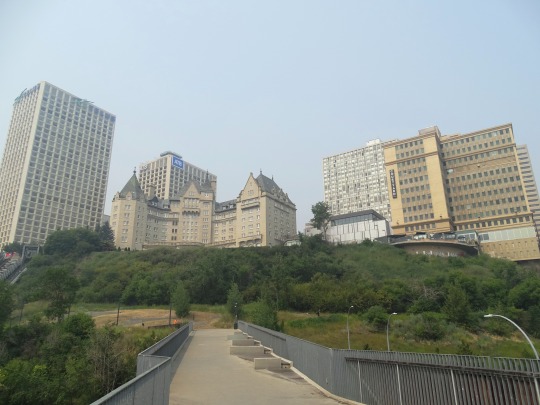
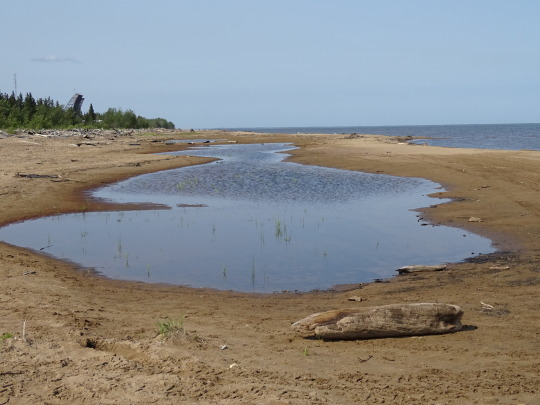
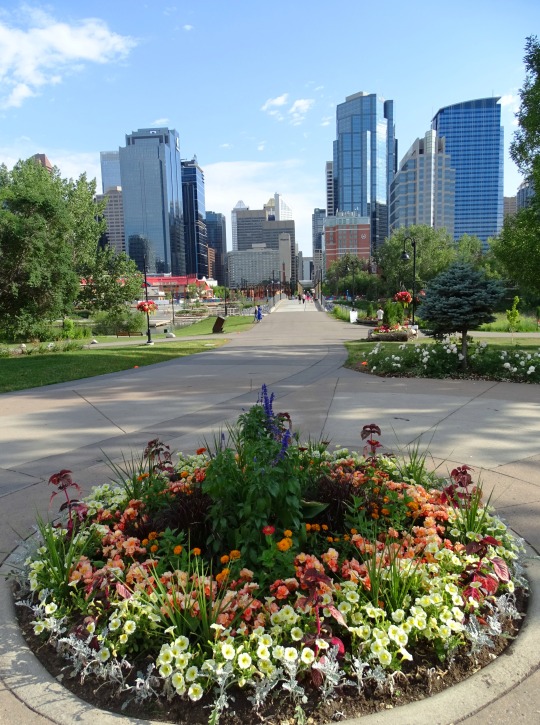







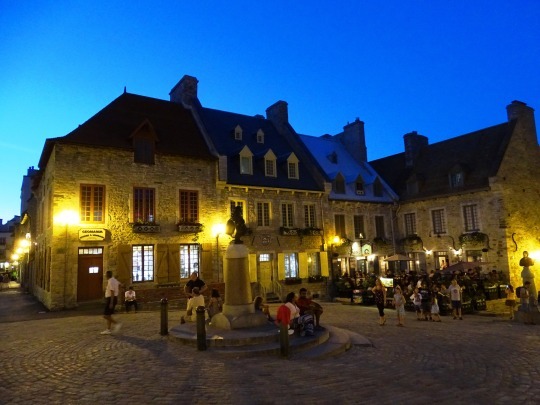

















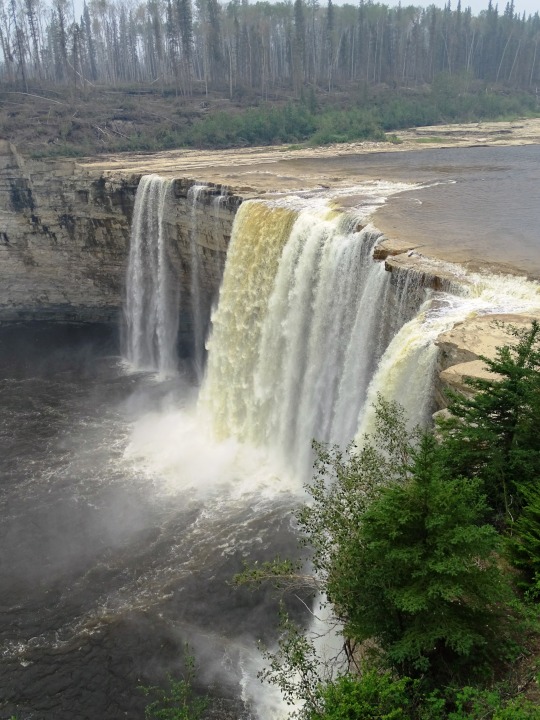
Statute of Westminster (11 December 1931) gave complete legislative independence to Canada, Australia, New Zealand, South Africa, Ireland (Free State), and Newfoundland (not then part of Canada).
Anniversary of the Statute of Westminster
The Anniversary of the Statute of Westminster is observed on December 11 every year. Although it is a holiday, Canadians still go to work, and it is pretty much an ordinary day for them. It is a nod to Canadian independence. The “Union Jack,” where logistics allow, is flown along with the Maple Leaf on federal buildings, airports, military bases from dawn to dusk to mark this day. It commemorates a British law that was passed on 11 December 1931. It was Canada’s final achievement of independence from Britain. The Statute of Westminster gave Canada and the other Commonwealth Dominions legal equality with Britain. These countries now had full legal freedom — except in areas which they chose. The Statute also defined the powers of Canada’s Parliament and those of the other Dominions. The day is mostly celebrated in Canada.
History of Anniversary of the Statute of Westminster
Before 1931, the British government had much influence over legislation passed by the Commonwealth Dominions (Canada, Australia, New Zealand, South Africa, the Irish Free State, and Newfoundland). Things began to change after the First World War — after the sacrifices of Canada and other Dominions on the battlefield stirred feelings of nationhood and desires for complete autonomy.
Canada began to assert its independence in foreign policy in the early 1920s. In 1922, Prime Minister William Lyon Mackenzie King denied help to British occupation forces in Turkey without first getting the approval of his Parliament. Later on, in 1923, Canada signed a fisheries’ treaty with the United States without seeking permission from Britain. In 1926, Canada established an embassy in Washington, DC, and Vincent Massey was named its first Canadian minister. This made him Canada’s first-ever diplomatic envoy posted to a foreign capital.
The Imperial Conference of 1926 was a more formal step. It gave legal backbone to the Balfour Report from earlier that year. The report had announced that Britain and its Dominions were constitutionally “equal in status.” The work of changing the Commonwealth’s complex legal system continued at the 1929 Conference on the Operation of Dominion Legislation. The Imperial Conference of 1930 further confirmed the need for the Dominions to have greater autonomy of their legislature. On 11 December 1931, the Statute of Westminster was passed by the British Parliament. This was done at the request and with the consent of the Dominions. This statute ratified the Dominions’ legislative independence. Although it had been granted the right to self-government in 1867, Canada did not enjoy full legal autonomy until the Statute was passed on December 11, 1931.
Anniversary of the Statute of Westminster timeline
15th and 16th Centuries Age of Discovery
Portugal and Spain pioneer European exploration of the globe, leading to the discovery of continents such as the Americas.
1757 Britain in India
Britain becomes the dominant power in the Indian subcontinent after defeating the Mughal in the Battle of Plassey.
1783 The American War of Independence
The war results in Britain losing some of its oldest and most populous colonies in North America.
1956 The Suez Crisis
The Suez Crisis confirms Britain's decline as a global power, because the Egyptian president nationalizes the Canal, owned by the Suez Canal Company, and formerly controlled by French and British interests.
Anniversary of the Statute of Westminster FAQs
Who is the current sovereign under the Statute of Westminster?
Today, the Statute of Westminster’s restrictive clause is still valid, so the current sovereign is Queen Elizabeth II. Her acting advisors are known as federal ministers of the Crown.
Which is more important: the Statute of Westminster or confederation?
The Statute of Westminster is arguably a more momentous occasion in Canada’s journey to sovereignty than to a confederation.
When did New Zealand adopt the Statute of Westminster?
The Parliament of New Zealand adopted the Statute of Westminster in November 1947.
How To Observe Anniversary of the Statute of Westminster
Explore from your armchair
Study your country’s history
Play a game such as balderdash
We have only given you brief information on the statute. Observe the anniversary by reading in detail about the statute — and things relating to it.
Britain had successfully colonized some of the biggest nations in the world. On this day, read about your country’s past — colonial or not — and try to understand how colonialism continues to affect the world today.
There are games that have categories including really strange laws from around the world, which would be fun with friends and family. While you are all laughing, remember that most laws had reasons, and have fun discussing that.
5 Facts About Canada That Will Blow Your Mind
Canadians eat the most donuts in the world
Bigfoot is legally protected in Canada
Smelling bad is illegal in Canada
The money is vision-impaired friendly
Canada has two national sports
There are only 30 million people in Canada, but over 1 billion donuts are eaten annually.
It is illegal to kill a Sasquatch in British Columbia.
Anyone smelling offensive in a public place could face two years in jail.
Canadian banknotes have braille writing on them for the blind.
Ice hockey and lacrosse are the national sports of Canada.
Why We Love the Anniversary of the Statute of Westminster
It’s a part of history
This day encourages us to explore our history
A day to learn and chat about laws
The Statute of Westminster played an important role in the history of Canada and other former dominions. The anniversary acknowledges this crucial day in history.
#Yukon#Statute of Westminster#11 December 1931#anniversary#legislative independence#vacation#Canada#Newfoundland#Canadian history#Québec#travel#Quebec City#Ottawa#Montréal#Ontario#original photography#cityscape#landscape#Niagara Falls#Lake Ontario#Atlantic Ocean#Alberta#Vancouver#British Columbia#Manitoba#Saskatchewan#New Brunswick#Nova Scotia#Pacific Ocean#Northwest Territories
6 notes
·
View notes
Text
Twenty-two countries officially requested to join BRICS
According to the Ministry of Foreign Affairs of Brazil, the bloc has received requests from 22 nations to join it. Eight are Arab. The BRICS summit will take place later this month in Johannesburg and be attended by Middle East leaders.

The Ministry of Foreign Affairs of Brazil said 22 countries have formally applied to join BRICS, a grouping of the world economies of Brazil, Russia, India, China, and South Africa.
The number was presented Wednesday (16) by the secretary for Asian and the Pacific of Brazil’s Foreign Ministry, Eduardo Paes Saboia, during a briefing on the trip that president Luiz Inácio Lula da Silva will make to South Africa, Angola, and São Tome e Príncipe.
Of the 22 countries that applied, eight are Arab: Algeria, Bahrain, Egypt, Kuwait, Morocco, Palestine, Saudi Arabia, and the United Arab Emirates.
In Johannesburg, South Africa, Lula will participate from August 22 to 24 in the 15th BRICS Summit. From there, he’ll continue to Angola, then São Tomé e Príncipe.
Continue reading.
#brazil#politics#russia#india#south africa#china#brics#international politics#mod nise da silveira#image description in alt
17 notes
·
View notes
Text

Kubjika is the main goddess of Kubjikamat. They are also called Vakreshwari, Vakrika, and Chhinini. The worship of Kubjika was at its peak in the 12th century. He is still worshiped in Kaul Tantra.
Kubjika is the presiding deity of Paschimnaya. Chinchini, Kulaalika, Kuja, Vaktrika, Krameshi, Khanjini, Kukita, Matangi etc. are other names of the goddess. Lord Parashiva first preached Kubjika worship from his western Sadyojatvaktra. As stated in Paratantra
It is said in the commentary of Shatasahasra Samhita that the thing which spreads everywhere in a narrow form due to Kubja is called Kubjika.
Kubjika Katham? Kubjo ghost enters everywhere. Tadvat. Sa everywhere Sankocharupatven Vyapatin Karoti Tada Kubjika.
Details related to Goddess Kubjika are found in Agnipuran, Matsyapuran and Garudapuran, compiled from the Gupta period (5th century AD) to the first half of the 9th century. This proves that Kubjikakram is ancient. Kubjika worship was at its peak in North India by the 10th-12th century. It became secret till the end of 15th-16th century. Abhinavagupta ji quotes some verses related to Goddess Kubjika in his Tantraloka. (Visual - Tantraloka 28th chapter which describes Kulyaga, Khandachakravichara episode).
In India, still a handful of devotees worship Kubjika independently and other devotees worship Kubjika in the Amnayaka order of Srividya. Evidence of Kubjika worship in Nepal dates back to 900-1600 AD. Manuscripts of texts like Manthanbhairavatantra, Shatasahasrasamhita, Kubjikamattantra, Ambasamhita, Shrimattantra etc. are available only from Nepal. Paschimnaya Kubjikrama tradition is still alive in Nepal.
-Agamacharya Animesh Nagar
कुब्जिका, कुब्जिकामत की मुख्य देवी हैं। इन्हें वक्रेश्वरी, वक्रिका, और छिञिनी भी कहते हैं। १२वीं शताब्दी में कुब्जिका की पूजा अपने चरम पर थी। कौल तंत्र में अब भी इनकी पूजा होती है।
तरुणरविनिभास्यां सिंहपृष्ठोपविष्टाम् कुचभरनमिताङ्गीं सर्वभूषाभिरामाम्। अभयवरदहस्तामेकवक्त्रां त्रिनेत्रां मदमुदितमुखाब्जां कुब्जिकां चिन्तयामि ॥
भगवति कुब्जिका पश्चिमाम्नाय की अधिष्ठात्री देवी हैं।चिंचिणी,कुलालिका,कुजा,वक्त्रिका,क्रमेशी,खंजिणी, त्वरिता,मातङ्गी इत्यादि देवी के ही अन्य नाम हैं । भगवान परशिव ने अपने पश्चिमस्थ सद्योजातवक्त्र से सर्वप्रथम कुब्जिका उपासना का उपदेश किया। जैसा कि परातन्त्र में कहा गया है
शतसाहस्रसंहिता के भाष्य में कहा गया है कि कुब्ज होकर जो सर्वत्र संकुचित रूप से व्याप्त हो जाती हैं उसे कुब्जिका कहते हैं।
कुब्जिका कथम्? कुब्जो भूत्वा सर्वत्र प्रवेशं आयाति । तद्वत् । सा सर्वत्र सङ्कोचरूपत्वेन व्याप्तिं करोति तदा कुब्जिका ।
गुप्तकाल (५ वीं शताब्दी ई ) से ९वीं शताब्दी के पूर्वार्ध तक संकलित अग्निपुराण, मत्स्यपुराण तथा गरुडपुराण में देवी कुब्जिका सम्बन्धी विवरण प���राप्त होता हैं। इस से इतना तो सिद्ध हो ही जाता है कि कुब्जिकाक्रम प्राचीन हैं। १०वीं-१२वीं शताब्दी तक उत्तरभारत में कुब्जिका उपासना अपने चरम पर थी। १५वीं-१६वीं शताब्दी के अन्त तक यह गुप्त हो गईं। अभिनवगुप्त जी अपने तन्त्रालोक में देवि कुब्जिका सम्बन्धी कुछ श्लोक उद्धृत करते हैं। (दृष्टव्य- तंत्रालोक २८ वां अध्याय जिसमें कुलयाग का वर्णन है, खंडचक्रविचार प्रकरण )।
भारत में अभी भी कुछ मुठ्ठीभर साधक स्वतंत्रक्रम से तथा अन्य साधकगण श्रीविद्या के आम्नायक्रम में कुब्जिका उपासना करते हैं। नेपाल में कुब्जिका उपासना के साक्ष्य ९००-१६०० ई तक के मिलते हैं। मन्थानभैरवतंत्र, शतसाहस्रसंहिता, कुब्जिकामततंत्र,अम्बासंहिता,श्रीमततंत्र आदि ग्रन्थों के हस्तलेख मात्र नेपाल से प्राप्त होते हैं। नेपाल में पश्चिमाम्नाय कुब्जिकाक्रमपरम्परा अभी तक जीवित हैं।
-आगमाचार्य अनिमेष नागर
3 notes
·
View notes
Text
Chinese Senior Diplomat Calls To Resist Cold War Mentality At BRICS Security Meetings
— Global Times Staff Reporters | July 25, 2023
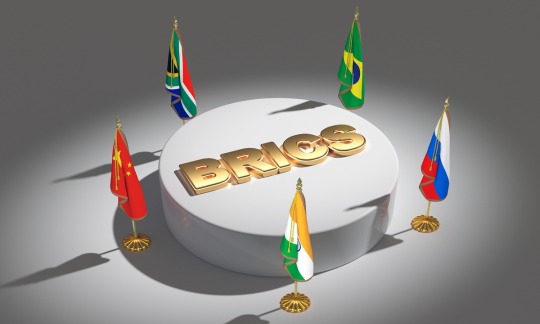
Photo: BRICS. VCG
Cyber security as well as other threats in traditional and non-traditional security fields have taken the spotlight at the ongoing meetings of BRICS countries in Johannesburg, South Africa, as analysts said that amid growing global uncertainties, more developing countries are seeking to improve solidarity to jointly tackle challenges to their development under the auspices of the BRICS mechanism.
While attending the 13th Meeting of BRICS National Security Advisers and High Representatives on National Security in Johannesburg, South Africa on Tuesday, senior Chinese diplomat Wang Yi said that after more than 10 years of development, the BRICS has become an important platform for emerging market countries and developing countries to unite and self-development.
Under the new situation, we must grasp the future development direction of the BRICS countries, further strengthen political mutual trust and strategic coordination, continue to provide international public goods that meet the requirements of the times, and strive to translate the BRICS spirit of openness, inclusiveness, and win-win cooperation into practical actions, and polish the "golden brand" of BRICS cooperation, Wang said.
To deal with the current global security challenges and solve the security dilemma, Wang also called for countries to resist unilateralism, hegemony and oppose "decoupling" and "double standards" and oppose Cold War mentality and zero-sum game.
Analysts said that the ongoing meetings for security advisors and senior diplomats from BRICS countries and "Friends of BRICS" underscored the security concerns of developing countries and new emerging economies over the destructive activities, "color revolutions" and cyber attacks plotted by some countries who have posed great threats to the stable development of developing countries and global peace.
Aside from expressing their concerns over traditional and non-traditional security fields, BRICS countries and developing countries are seeking to improve solidarity to jointly tackle development challenges under the BRICS mechanism, which will also be part of the build-up to the 15th BRICS Summit in South Africa to be held from August 22 to 24, they noted.
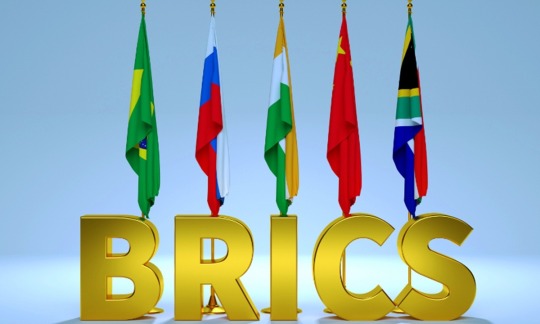
On Monday, a meeting, which was held under the theme of "Cyber security is increasingly becoming a challenge for developing countries," is also being attended by Minister in the Presidency of South Africa Khumbudzo Ntshavheni, Chief Adviser of the Presidency of Brazil Celso Luiz Nunes Amorim, Secretary of the Security Council of the Russian Federation Nikolai Patrushev, National Security Adviser Ajit Doval of India and representatives of Belarus, Iran, Saudi Arabia, Egypt, Burundi, the United Arab Emirates, Kazakhstan, Cuba and other countries.
Security Concerns Under Spotlight
During the Tuesday meeting, Wang, member of the Political Bureau of the Communist Party of China (CPC) Central Committee and also director of the Office of the CPC Central Commission for Foreign Affairs, said that the "Global South" is a collection of emerging market countries and developing countries, reflecting our collective rise on the international stage. Countries in the "Global South" face the important mission of resisting the external intervention and maintaining political security and regime security.
Wang Yi said that unity is strength, action is direction, and openness is motivation. China is willing to work with BRICS partners to support each other's efforts to maintain national security and stability, and to carry out more practical cooperation in dealing with international security challenges, so that the world can hear more BRICS voices and witness a greater role of the BRICS.
Senior officials on security from BRICS countries also exchanged in-depth views on issues such as current security challenges, anti-terrorism and cyber security, food and water security, and energy security, and reached broad consensus, according to a release from Chinese Foreign Ministry.
The issue of cyber security has been discussed at length at the ongoing BRICS meeting as some Western countries have intensified using the internet to conduct destructive activities in other countries, including inciting domestic riots, fooling the public or organizing cyber attacks on governmental departments, which have posed threats to developing countries' stability and development, Song Zhongping, a Chinese military expert and TV commentator, told the Global Times on Tuesday.
The meeting on security, together with other meetings in various fields, will lay the groundwork for the leaders' summit in August, as the BRICS mechanism is a cooperative mechanism beyond economic and security fields, and whether it is regarding traditional or non-traditional fields, it would safeguard development and cooperation in other areas, Song said.
This year's BRICS summit will focus on improving cooperation between BRICS members and African countries in technology, economy and other fields, and security would also be the basis for cooperation, said Song.
South Africa has invited the heads of state of all African countries to the summit, which is themed as "BRICS and Africa: Partnership for Mutually Accelerated Growth, Sustainable Development, and Inclusive Multilateralism." The summit is anticipated to discuss how BRICS countries can better work with African countries, media reported.
Security is the core concern for the financial cooperation of BRICS countries and other developing countries. This is also why BRICS countries are studying the potential use of alternative currencies to the US dollar, analysts said.

For the past months, many media, especially those from the West and the US, have reported that BRICS countries are seeking to shift from the dollar in mutual trade to avoid becoming "victim" to sanctions. For example, in April, Bloomberg reported that Brazilian President Luiz Inacio Lula da Silva called on BRICS countries to come up with an alternative to the dollar in foreign trade.
South Africa, the BRICS chair, has put the stability of the global financial system as a priority for the BRICS meetings, as BRICS countries and developing countries have been put in an unfavorable position that would be affected by global financial hegemony, Wang Lei, director of the Center for BRICS Cooperation Studies at Beijing Normal University, told the Global Times.
However, de-dollarization is not the core mission of BRICS countries and what they want is to make the global financial system fairer and more inclusive, and to better reflect the major changes that have happened in the global governing system, Wang Lei said.
Against the backdrop of the continuous Russia-Ukraine conflict and drastic global changes unseen in a century, developing countries are seeking to inject more stable and secure impetus to the world and to promote the international governing system to be more inclusive and better reflect their interests. However, the US and some Western media have smeared their efforts, analysts said.
What BRICS countries are working toward is not to compete with the US for its hegemony, but to build a multipolar world in which each country's concerns on security, economy and developments can be respected by others - this may also be the reason for the US and West's increasing worries of the growing influence and attractiveness of BRICS, Song said.
#BRICS#South Africa 🇿🇦#Cold War Mentality#Decoupling#Double Standards#Cyber Security#Global South#China 🇨🇳#Mutually Accelerated Growth#Sustainable Development#Multilateralism#Bloomberg#Brazil 🇧🇷#President Luiz Inacio Lula da Silva#Global Times#Alternative Currencies#US Dollar 🇺🇸
6 notes
·
View notes
Text
Meduza: BRICS
The leaders of Brazil, China, India, and South Africa met in Johannesburg for the opening of the 15th annual BRICS summit on Tuesday, but Vladimir Putin stayed home. In his place, he sent Foreign Minister Sergey Lavrov, who, unlike Putin himself, is not the target of an ICC arrest warrant. Last month, the Russian president told reporters that his being in Russia is simply “more important” than his attendance at the summit.
In reality, the future of the BRICS bloc, whose collective share of the world economy is now larger than that of the G7 countries by some measures, is vitally important to the Putin administration as it seeks to overcome the West’s isolation campaign. In an essay published on the eve of the event, the Russian Foreign Ministry heralded the birth of a “fairer, multipolar world order” that will preclude “Cold War logic” and “zero-sum geopolitical games.”
Putin did send along a message to his fellow leaders (and to the attendees from dozens of countries that have expressed interest in joining BRICS). In a prerecorded speech, the president blamed the West for global food supply issues, outlined Moscow’s plans to address climate change, and generally assured the Global South that Russia gets them. But while he did his best to project strength, an apparent technical error that made his voice sound like Darth Vader made it difficult to forget how many doors are now closed to him.
3 notes
·
View notes
Text
Indian Army Day 2023: Date, images, Facts, Quotes, History.
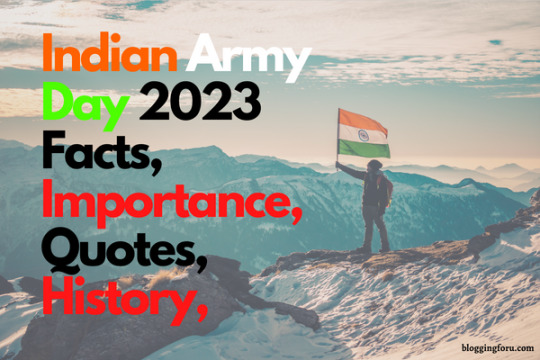
If you want to know about Indian army day, then you have come to the right place, we will give you all the information about Indian army day and you will know a lot of things about Indian army day so let’s start.
bloggingforu Provides You with knowledgeable and Informational content.
History Of Indian Army Day
Indian Army Day has been every year on the 15th day of January since 1949 , in order to honor general K.M. Cariappa for being the initial Indian chief in the Indian Arm. Prior to the time, Cariappa was the British was the commander-in-chief in the Indian Army.
General Cariappa was named the first Indian chief of staff on the 15th of January 1949 by the the Governor General at that time of India, Chakravarthi Rajagopalachari, succeeding General Sir Francis Butcher, the last British chief of staff in India.
It was a significant occasion in the development of an independent India and was a crucial move towards the transfer of authority to British rule to British into the Indian government. It also was a signal of India’s rising independence and the strength of its military.
Since the year 2000, Army Day is celebrated to commemorate the soldiers who sacrificed their lives in defense of the nation. It is also a time to celebrate the achievements achieved by Army, which is the Indian Army, and to recognize the sacrifices and contributions of soldiers currently serving.
The day is marked by parades and displays of the military across the nation. A wreath-laying ceremony is conducted to commemorate the tombs of fallen soldiers. The President and Prime Minister also wish the best to the soldiers of their Indian Army on this day.
How India Celebrates Indian Army Day?
Indian Army Day is celebrated across cities and towns across India every year on the 15th January of every year. The biggest celebrations take place in Delhi, the capital of India of New Delhi, where an elaborate parade is held in the Cariappa Parade Ground in the central city.
The parade includes an exhibition of military equipment and equipment as well as the parade of soldiers from different regiments of the Indian Army, Navy, and Air Force. The President of India and the chief participant at the event will oversee the parade and award the soldiers medals, awards and decorations in recognition of their extraordinary service.
In other cities in India parades are held in the cities of each city and cantonments for military personnel with troops and military bands who participate at the event. The celebrations take place at war memorials and military graveyards across the country where wreaths are placed on the graves of fallen soldiers.
It’s also the day that many schools and colleges are staffed by military personnel who teach students about how important the military is and its contributions for the national cause. Many families with soldiers visit their homes to show their gratitude to them for their work.
Happy Indian Army Quotes
“Yeh Dil Mangey More” — Capt. Vikram Batra
2. “If a man says he’s not afraid of dying, he’s either lying or he’s a Gurkha” — Field Marshal Sam Manekshaw
3. “Some goals are so worthy its glorious even to fail” — Capt. Manoj Kumar Pandey
4. “I shall not withdraw an inch but will fight to our last man and our last round” — Major Somnath Sharma
5. “We fight to win and win with a knockout because there are no runners-up in war” -General JJ Singh
6. “Only best of the friends and worst of the enemies visit us”
7. “There will be no withdrawal without written orders and these orders shall never be issued” — Field Marshal Sam Manekshaw

8. “Either I will come back after hoisting the Tricolour, or I will come back wrapped in it, but I will be back for sure” — Captain Vikram Batra
9. ” Some goals are so worthy, it’s glorious even to fail”– Captain Manoj Kumar Pandey
10. “No real change in history has ever been achieved by discussions” — Subhas Chandra Bose
#india#quotes#motivational quotes#indian army day#army day#army quotes#soldier#soldier quotes#blog#blogger#bloggingforu
2 notes
·
View notes
Text
Your Gateway to Excellence in Healthcare: Register for the 15th Conference Now
Are you ready to elevate your understanding of healthcare, hospital management, nursing, and patient safety? The 15th World Healthcare, Hospital Management, Nursing, and Patient Safety Conference (15NHPSUCG2025) is your ultimate opportunity to connect with global experts, explore the latest innovations, and shape the future of healthcare.
Important Information:
Conference Name: 15th World Healthcare, Hospital Management, Nursing, and Patient Safety Conference
Short Name: 15NHPSUCG2025
Dates: May 14-16, 2025
Venue: San Francisco, United States & Virtual
Email: [email protected]
Website: Visit Here
Submit Abstract: Call for Papers
Register Here: Click to Register
Call/WhatsApp: US +447723493307
Meet Our Esteemed Experts
Keynote Speakers and Experts
Dr. Adele Webb, PhD, RN, FNAP, FAAN – Strategic Education, Inc., USA
Ms. Christina Foxwell – CEO of Ignite Purpose, Australia
Dr. Priyanka Hemant Pansare – Photographer, General Practitioner | MBBS, MPC, NLP, UAE
Mr. Shanmugavelan Ramakrishnan – Doctor of Nursing Practice, USA
Dr. Sahar Mohmed – Capital Health, USA
Ms. Vijayalakshmi A Nair – CK BIRLA HOSPITALS, CMRI, India
Mrs. Geethu Kayalil Gopi – CK BIRLA HOSPITALS, CMRI, India
Ms. Monami Dawn – CK BIRLA HOSPITALS, CMRI, India
Previous Speakers and Organizing Committee Members
Prof. Dr. Robert H. Schiestl – University of Vienna, Austria
Dr. Barry Lachman – President, Lachman Community Development and Consulting Services
Ms. Lori Beth Irvin – Founder and CEO of LBIngenuity
Dr. Minerva Kelada – Chief Medical Officer for Imperial County Medical Groups
Dr. Charles Hale – President of Hale Consulting Solutions LLC
Ms. Barbara De Groot – Nursing Educator at Carrington College, Albuquerque
Dr. Priyanka Mathur – MD, Founder and CEO at MediPocket
Ms. Faviola Brugger-Dadis – Founder & Chief Innovation Officer at NeuroReality
Dr. Udim Isang – CEO/Founder of Sunny Therapeutics
Conference Tracks: Dive into Cutting-Edge Topics
Track 1: Nursing
Gain insights into advanced nursing practices, research innovations, and patient-centered care strategies.
Track 2: Healthcare Management
Explore strategies for effective hospital administration, resource optimization, and leadership in healthcare.
Track 3: Patient Safety
Learn about the latest protocols and technologies ensuring optimal safety for patients in healthcare systems.
Track 4: Public & Community Healthcare
Understand approaches to improving healthcare accessibility and addressing public health challenges globally.
Track 5: Patient Education
Discover tools and methods to empower patients through education and shared decision-making.
Track 6: Healthcare Informatics
Dive into data-driven healthcare innovations that are transforming medical practices and patient care.
Track 7: Healthcare Innovations
Uncover groundbreaking advancements shaping the future of the healthcare industry.
Track 8: Digital Healthcare
Explore the integration of telemedicine, AI, and other digital tools in modern healthcare.
Track 9: Preventive Medicine
Focus on strategies to prevent diseases and promote long-term wellness.
Track 10: Health Promotion
Engage in discussions about advocacy and initiatives promoting healthier lifestyles globally.
Track 11: Technology and Nursing Science
Learn how technology is revolutionizing nursing education, practices, and patient outcomes.
Why Attend?
Network with industry leaders, researchers, and practitioners.
Participate in dynamic sessions across diverse healthcare disciplines.
Stay ahead with insights into the latest trends and innovations.
Contribute your research to the global healthcare community.
Don’t miss this opportunity to be part of a transformative event. Register now to secure your spot in the 15th World Healthcare Conference and embark on your journey toward excellence in healthcare.
Let’s Connect on Social Media!
Hashtags:
#HealthcareConference2025 | #NursingConference | #PatientSafety2025 | #DigitalHealthcare | #PreventiveMedicine
Join the conversation and help us spread the word!
#HealthcareConference2025 |#NursingConference |#PatientSafety2025 |#DigitalHealthcare |#PreventiveMedicine
0 notes
Text
[ad_1] Gukesh D crowned 18th World Champion (Source: Fide Chess/X) In world chess, 2024 will be remembered as India’s year. Making it more specific, it was the year of the youngsters from the country. The game was anticipating an Indian upsurge anytime. This bunch of boys and girls were making their presence felt in major events. D Gukesh’s triumph at the World Championship announced emphatically that they have arrived big time. This was coming. The first signs were seen at the Chennai Chess Olympiad in 2022. The Indian men’s team won bronze — for the second time after 2014 — while the women clinched a first bronze. Then, four Indians reached the quarterfinals of the World Cup in Azerbaijan last year. R Praggnanandhaa went on to finish runner-up, losing to World No. 1 Magnus Carlsen. The world had taken note of this. A lot of people were predicting a bright future for these kids. But nobody thought that it would happen so fast,within a calendar year,and the numbers would be so high. This was like alchemy, as whatever they touched turned into gold.Not many countries in history have experienced this volume of success in a year. Gukesh set the ball rolling by winning the eight-player Candidates meet, where three Indians took part. Pragg beat Carlsen in the classical format in an event in Norway, Divya Deshmukh won the girls’ title in the under-19 World Championship, R Vaishali became the third Indian woman to become a Grandmaster, the Indian teams won both gold medals at the Chess Olympiad, Nihal Sarin was adjudged player of the tournament at the Global Chess League, Arjun Erigaisi became the 15th player in history to cross 2800 in Elo ratings, before Gukesh provided the perfect finishing touch. “Today, it’s completely different with Indian chess,” Zurab Azmaiparashvili, veteran Georgian Grandmaster and president of the European Chess Union, told RevSportz in Singapore after the World Championship fight between Gukesh and Ding Liren. “It’s a new generation and you are not only leading the world, but also guiding the world how to play in the future. I won’t be surprised to see two Indian in the next World Championship match.” For the Latest Sports News: Click Here D Gukesh and Ding Liren in the World Chess Championship match (PC: ChessbaseIndia/X) The 64-year-old knows Indian chess. He was the coach of the Indian team for a while in the first decade of the century and worked with the likes of K Sasikiran and P Harikrishna, the latter a part of Gukesh’s support team for the World Championship.“I’m impressed with Gukesh and all the players who were part of the Olympiad teams,”noted Azmaiparashvili. “For this, I thank the All India Chess Federation. In the last 10 years, they have done a great job to build this generation that we see now.” The best part of this story is it doesn’t begin and end with Gukesh. There is Viswanathan Anand as a mentor and guiding force. Other than being involved with the WestBridge Anand Chess Academy — where Gukesh, Pragg, Arjun, Vaishali and others train — he also helped the new world champion prepare for the big match. Other than those mentioned before, Vidit Gujrathi has cemented his place among the elite, Raunak Sadhwani is coming up fast, and Vantika Agarwal is also on the way up. The AICF is trying to capitalise on this momentum. It wants to host big tournaments next year and according to Nitin Narang, the AICF president, plans are afoot for two. The absence of big events in the country means players have to travel abroad in order to gain norms and rating points. This has been a long-standing complaint from the players. The Chennai GM tournament held twice so far is the only one they have at the moment. This is not organised by the AICF. “Making sure that the players in age-groups from under-7 to under-19 (top three in each category, boys and girls)get a monthly stipend is priority,” Narang told RevSportz in Singapore. The federation is looking at an amount of Rs 20,000-25,000 per month. “We also want to offer more in prize money at the state level.
The units will receive Rs 12.5 lakh and Rs 15 lakh (in a phased manner) per year. Of that, Rs 8 lakh should be spent on prize money. It won’t be a driver, but an incentive.” There is lots to look back on and forwardto in Indian chess, taking 2024 as the point in the middle. Earlier, this was about the periods before and after Anand. Now, a new chapter has started. Even the five-time world champion may not have thought that good results would be in such quantity. “I’ll be happy if proven wrong, but it’s difficult to top this year,” Anand summed it up succinctly. Also Read: Outside noise over Gukesh’s triumph an expression of frustration The post A year of alchemy for Indian chess appeared first on Sports News Portal | Latest Sports Articles | Revsports. [ad_2] Source link
0 notes
Text
[ad_1] Gukesh D crowned 18th World Champion (Source: Fide Chess/X) In world chess, 2024 will be remembered as India’s year. Making it more specific, it was the year of the youngsters from the country. The game was anticipating an Indian upsurge anytime. This bunch of boys and girls were making their presence felt in major events. D Gukesh’s triumph at the World Championship announced emphatically that they have arrived big time. This was coming. The first signs were seen at the Chennai Chess Olympiad in 2022. The Indian men’s team won bronze — for the second time after 2014 — while the women clinched a first bronze. Then, four Indians reached the quarterfinals of the World Cup in Azerbaijan last year. R Praggnanandhaa went on to finish runner-up, losing to World No. 1 Magnus Carlsen. The world had taken note of this. A lot of people were predicting a bright future for these kids. But nobody thought that it would happen so fast,within a calendar year,and the numbers would be so high. This was like alchemy, as whatever they touched turned into gold.Not many countries in history have experienced this volume of success in a year. Gukesh set the ball rolling by winning the eight-player Candidates meet, where three Indians took part. Pragg beat Carlsen in the classical format in an event in Norway, Divya Deshmukh won the girls’ title in the under-19 World Championship, R Vaishali became the third Indian woman to become a Grandmaster, the Indian teams won both gold medals at the Chess Olympiad, Nihal Sarin was adjudged player of the tournament at the Global Chess League, Arjun Erigaisi became the 15th player in history to cross 2800 in Elo ratings, before Gukesh provided the perfect finishing touch. “Today, it’s completely different with Indian chess,” Zurab Azmaiparashvili, veteran Georgian Grandmaster and president of the European Chess Union, told RevSportz in Singapore after the World Championship fight between Gukesh and Ding Liren. “It’s a new generation and you are not only leading the world, but also guiding the world how to play in the future. I won’t be surprised to see two Indian in the next World Championship match.” For the Latest Sports News: Click Here D Gukesh and Ding Liren in the World Chess Championship match (PC: ChessbaseIndia/X) The 64-year-old knows Indian chess. He was the coach of the Indian team for a while in the first decade of the century and worked with the likes of K Sasikiran and P Harikrishna, the latter a part of Gukesh’s support team for the World Championship.“I’m impressed with Gukesh and all the players who were part of the Olympiad teams,”noted Azmaiparashvili. “For this, I thank the All India Chess Federation. In the last 10 years, they have done a great job to build this generation that we see now.” The best part of this story is it doesn’t begin and end with Gukesh. There is Viswanathan Anand as a mentor and guiding force. Other than being involved with the WestBridge Anand Chess Academy — where Gukesh, Pragg, Arjun, Vaishali and others train — he also helped the new world champion prepare for the big match. Other than those mentioned before, Vidit Gujrathi has cemented his place among the elite, Raunak Sadhwani is coming up fast, and Vantika Agarwal is also on the way up. The AICF is trying to capitalise on this momentum. It wants to host big tournaments next year and according to Nitin Narang, the AICF president, plans are afoot for two. The absence of big events in the country means players have to travel abroad in order to gain norms and rating points. This has been a long-standing complaint from the players. The Chennai GM tournament held twice so far is the only one they have at the moment. This is not organised by the AICF. “Making sure that the players in age-groups from under-7 to under-19 (top three in each category, boys and girls)get a monthly stipend is priority,” Narang told RevSportz in Singapore. The federation is looking at an amount of Rs 20,000-25,000 per month. “We also want to offer more in prize money at the state level.
The units will receive Rs 12.5 lakh and Rs 15 lakh (in a phased manner) per year. Of that, Rs 8 lakh should be spent on prize money. It won’t be a driver, but an incentive.” There is lots to look back on and forwardto in Indian chess, taking 2024 as the point in the middle. Earlier, this was about the periods before and after Anand. Now, a new chapter has started. Even the five-time world champion may not have thought that good results would be in such quantity. “I’ll be happy if proven wrong, but it’s difficult to top this year,” Anand summed it up succinctly. Also Read: Outside noise over Gukesh’s triumph an expression of frustration The post A year of alchemy for Indian chess appeared first on Sports News Portal | Latest Sports Articles | Revsports. [ad_2] Source link
0 notes
Text
Famous Temple Of Rajasthan, (Rajasthan Devdarshan)
Rajasthan, known for its rich history, vibrant culture, and royal heritage, is also home to some of India’s most magnificent temples. These temples are not only architectural marvels but also spiritual sanctuaries, attracting visitors from across the world. Here’s a look at some of the most famous temples of Rajasthan, each reflecting the state’s glorious legacy and profound spiritual traditions.

1. Dilwara Temples, Mount Abu
The Dilwara Temples, located in Mount Abu, are a group of five Jain temples renowned for their stunning marble architecture and intricate carvings. Built between the 11th and 13th centuries, the temples showcase exquisite craftsmanship with detailed carvings on pillars, ceilings, and walls. The most famous of the Dilwara temples is the Vimal Vasahi Temple, dedicated to Lord Adinath, the first Jain Tirthankara. The delicate marble work and precision of design make it a prime example of Jain architecture and devotion.
2. Brahma Temple, Pushkar
The Brahma Temple in Pushkar is one of the few temples in the world dedicated to Lord Brahma, the Hindu god of creation. This ancient temple, believed to be over 2000 years old, is surrounded by myths and legends. Its red spire and distinct architecture make it easily recognizable. The Pushkar Lake, adjacent to the temple, holds significant religious importance, especially during the annual Pushkar Camel Fair, when thousands of pilgrims visit to take a holy dip in the lake and offer prayers at the Brahma Temple.
3. Govind Dev Ji Temple, Jaipur
Located in the City Palace complex in Jaipur, the Govind Dev Ji Temple is dedicated to Lord Krishna. Built during the reign of Raja Sawai Jai Singh II in the 18th century, the temple features a simple yet elegant design. The idol of Lord Krishna in this temple is believed to have been brought from Vrindavan and holds great reverence among the devotees. The temple is especially lively during Janmashtami, the birth anniversary of Lord Krishna, attracting devotees and tourists alike.
4. Karni Mata Temple, Deshnoke
Located in Deshnoke, near Bikaner, the Karni Mata Temple is unique and famous for its association with rats. The temple is dedicated to Karni Mata, a revered sage believed to be an incarnation of Goddess Durga. The temple houses thousands of rats, considered sacred and known as "kabbas." Devotees believe that spotting a white rat is highly auspicious. The temple’s intricate silver gates and marble carvings add to its allure, making it a unique pilgrimage site in Rajasthan.
5. Eklingji Temple, Udaipur
The Eklingji Temple, located about 22 kilometers from Udaipur, is dedicated to Lord Shiva and serves as the presiding deity of the Mewar dynasty. Built in the 8th century, the temple complex comprises 108 small temples, each showcasing splendid architecture. The main deity, a four-faced idol of Lord Shiva, is crafted in black marble. The temple attracts devotees, particularly during Maha Shivaratri, when it is decorated with flowers, and grand rituals are performed.
6. Ranakpur Jain Temple
The Ranakpur Jain Temple, located between Jodhpur and Udaipur, is dedicated to Lord Adinath and is one of the most prominent Jain temples in Rajasthan. Built in the 15th century, the temple is famous for its 1444 marble pillars, each uniquely carved. The intricate detailing of the pillars and the serene ambiance of the temple attract not only devotees but also architecture enthusiasts.
#Dilwara Temples#Brahma Temple#Govind Dev Ji#Ranakpur Jain Temple#Karni Mata Temple#Eklingji Temple#Pushkar#Jaipur#Mount Abu#Udaipur#Pali#Bikaner#Jain Temples#Pilgrimage#Architectural Heritage
2 notes
·
View notes
Text
Russian President Vladimir Putin: 'Prepare for our production operations in India'
Russian President Vladimir Putin has said the country is ready to set up production operations in India. The Indian government quoted Putin as saying in a statement on Thursday that Russian oil producer Rosneft had recently invested $ 20 billion in India. According to the statement, Putin at the 15th VTB Russia Calling Investment Forum on Wednesday said, “We are also ready to set up our…
0 notes
Text
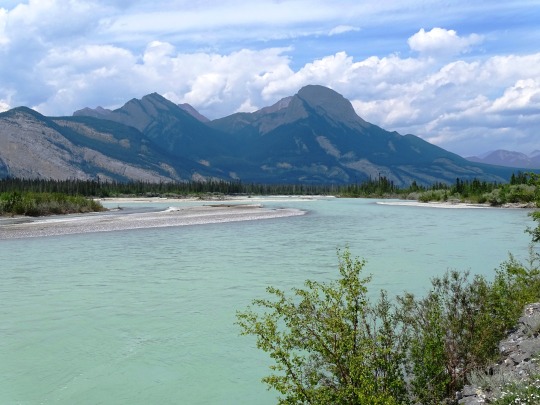

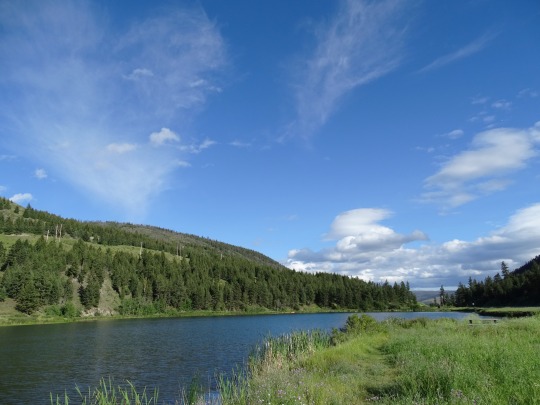




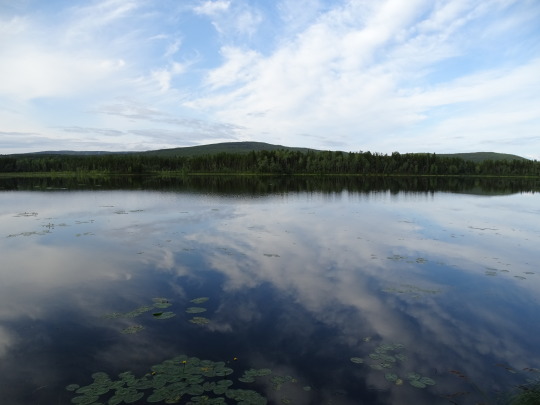


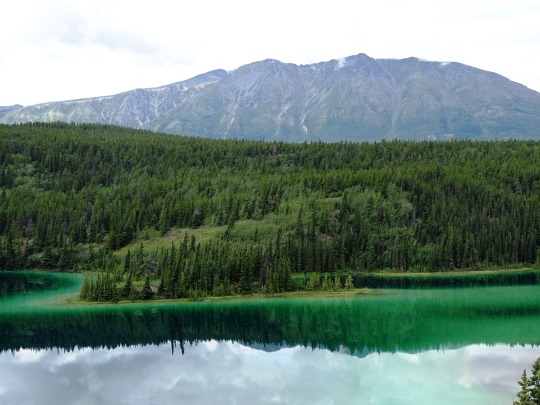

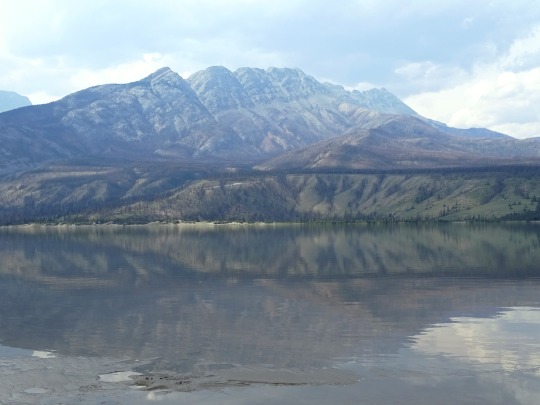


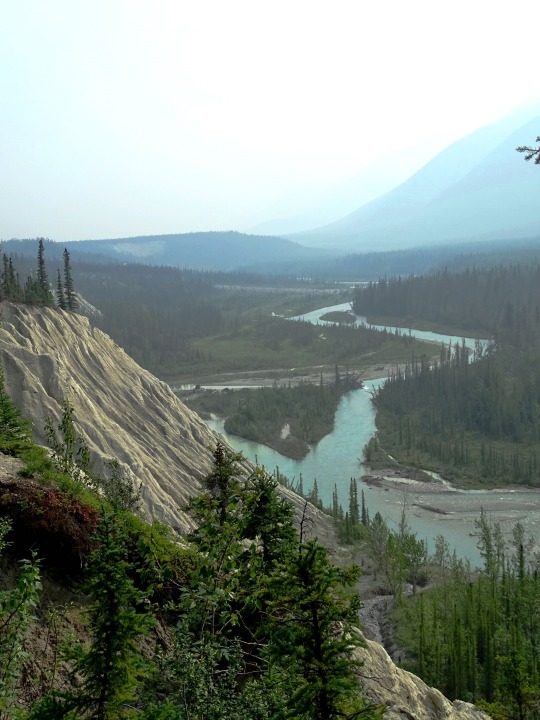

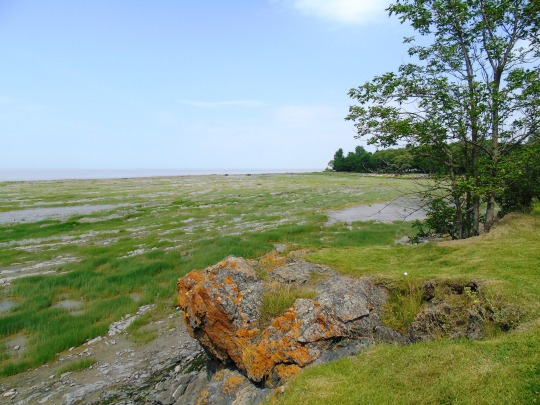

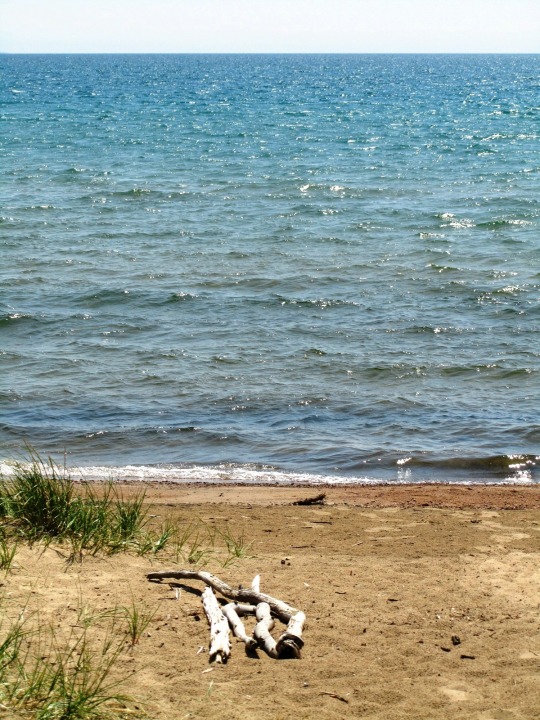
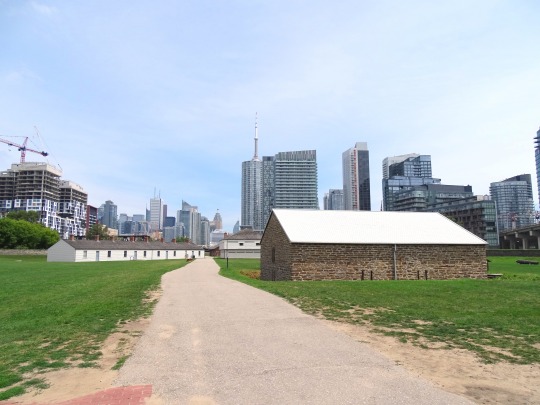

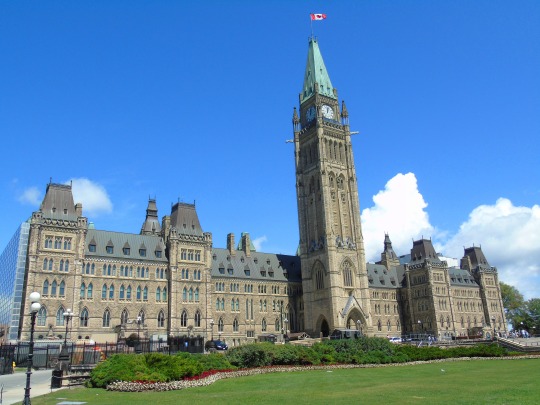

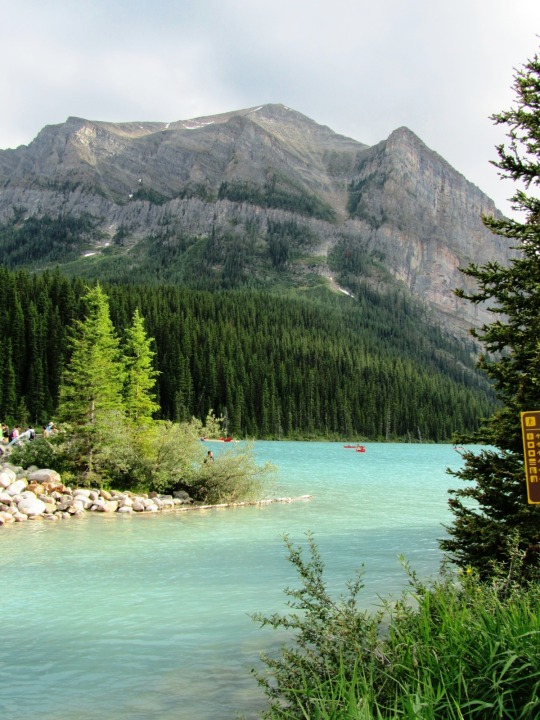
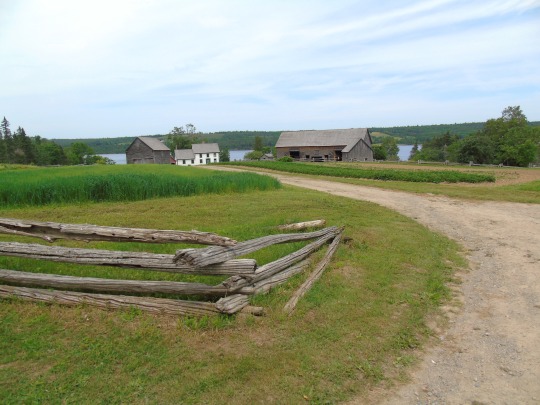




Statute of Westminster (11 December 1931) gave complete legislative independence to Canada, Australia, New Zealand, South Africa, Ireland (Free State), and Newfoundland (not then part of Canada).
Anniversary of the Statute of Westminster
The Anniversary of the Statute of Westminster is observed on December 11 every year. Although it is a holiday, Canadians still go to work, and it is pretty much an ordinary day for them. It is a nod to Canadian independence. The “Union Jack,” where logistics allow, is flown along with the Maple Leaf on federal buildings, airports, military bases from dawn to dusk to mark this day. It commemorates a British law that was passed on 11 December 1931. It was Canada’s final achievement of independence from Britain. The Statute of Westminster gave Canada and the other Commonwealth Dominions legal equality with Britain. These countries now had full legal freedom — except in areas which they chose. The Statute also defined the powers of Canada’s Parliament and those of the other Dominions. The day is mostly celebrated in Canada.
History of Anniversary of the Statute of Westminster
Before 1931, the British government had much influence over legislation passed by the Commonwealth Dominions (Canada, Australia, New Zealand, South Africa, the Irish Free State, and Newfoundland). Things began to change after the First World War — after the sacrifices of Canada and other Dominions on the battlefield stirred feelings of nationhood and desires for complete autonomy.
Canada began to assert its independence in foreign policy in the early 1920s. In 1922, Prime Minister William Lyon Mackenzie King denied help to British occupation forces in Turkey without first getting the approval of his Parliament. Later on, in 1923, Canada signed a fisheries’ treaty with the United States without seeking permission from Britain. In 1926, Canada established an embassy in Washington, DC, and Vincent Massey was named its first Canadian minister. This made him Canada’s first-ever diplomatic envoy posted to a foreign capital.
The Imperial Conference of 1926 was a more formal step. It gave legal backbone to the Balfour Report from earlier that year. The report had announced that Britain and its Dominions were constitutionally “equal in status.” The work of changing the Commonwealth’s complex legal system continued at the 1929 Conference on the Operation of Dominion Legislation. The Imperial Conference of 1930 further confirmed the need for the Dominions to have greater autonomy of their legislature. On 11 December 1931, the Statute of Westminster was passed by the British Parliament. This was done at the request and with the consent of the Dominions. This statute ratified the Dominions’ legislative independence. Although it had been granted the right to self-government in 1867, Canada did not enjoy full legal autonomy until the Statute was passed on December 11, 1931.
Anniversary of the Statute of Westminster timeline
15th and 16th Centuries Age of Discovery
Portugal and Spain pioneer European exploration of the globe, leading to the discovery of continents such as the Americas.
1757 Britain in India
Britain becomes the dominant power in the Indian subcontinent after defeating the Mughal in the Battle of Plassey.
1783 The American War of Independence
The war results in Britain losing some of its oldest and most populous colonies in North America.
1956 The Suez Crisis
The Suez Crisis confirms Britain's decline as a global power, because the Egyptian president nationalizes the Canal, owned by the Suez Canal Company, and formerly controlled by French and British interests.
Anniversary of the Statute of Westminster FAQs
Who is the current sovereign under the Statute of Westminster?
Today, the Statute of Westminster’s restrictive clause is still valid, so the current sovereign is Queen Elizabeth II. Her acting advisors are known as federal ministers of the Crown.
Which is more important: the Statute of Westminster or confederation?
The Statute of Westminster is arguably a more momentous occasion in Canada’s journey to sovereignty than to a confederation.
When did New Zealand adopt the Statute of Westminster?
The Parliament of New Zealand adopted the Statute of Westminster in November 1947.
How To Observe Anniversary of the Statute of Westminster
Explore from your armchair
Study your country’s history
Play a game such as balderdash
We have only given you brief information on the statute. Observe the anniversary by reading in detail about the statute — and things relating to it.
Britain had successfully colonized some of the biggest nations in the world. On this day, read about your country’s past — colonial or not — and try to understand how colonialism continues to affect the world today.
There are games that have categories including really strange laws from around the world, which would be fun with friends and family. While you are all laughing, remember that most laws had reasons, and have fun discussing that.
5 Facts About Canada That Will Blow Your Mind
Canadians eat the most donuts in the world
Bigfoot is legally protected in Canada
Smelling bad is illegal in Canada
The money is vision-impaired friendly
Canada has two national sports
There are only 30 million people in Canada, but over 1 billion donuts are eaten annually.
It is illegal to kill a Sasquatch in British Columbia.
Anyone smelling offensive in a public place could face two years in jail.
Canadian banknotes have braille writing on them for the blind.
Ice hockey and lacrosse are the national sports of Canada.
Why We Love the Anniversary of the Statute of Westminster
It’s a part of history
This day encourages us to explore our history
A day to learn and chat about laws
The Statute of Westminster played an important role in the history of Canada and other former dominions. The anniversary acknowledges this crucial day in history.
It’s easy to forget history when we are caught up in the hustle-bustle of our daily lives. The Anniversary of the Statute of Westminster encourages us to take a look at our history and find out more about our country’s past.
Celebrate the Anniversary of the Statute of Westminster as a day to learn about the rules, acts, and laws that are applicable in your country.
Source
#Yukon#Statute of Westminster#11 December 1931#anniversary#legislative independence#vacation#Canada#Newfoundland#Canadian history#Québec#travel#Quebec City#Ottawa#Montréal#Ontario#original photography#cityscape#landscape#Niagara Falls#Lake Ontario#Atlantic Ocean#Alberta#Lake Louise#Vancouver#British Columbia#Manitoba#Saskatchewan#New Brunswick#Nova Scotia#Pacific Ocean
3 notes
·
View notes
Text
Investments in India profitable, Russia ready to place manufacturing site in country: Putin
Moscow: Russian President Vladimir Putin lauded Prime Minister Narendra Modi and the Indian government for creating ‘stable conditions’ for small and medium-sized enterprises (SMEs) and offered to place Russian manufacturing sites in India. Speaking at the 15th VTB Investment Forum in Moscow on Wednesday, Putin also noted the rise of new Russian brands replacing Western brands that have exited…
0 notes